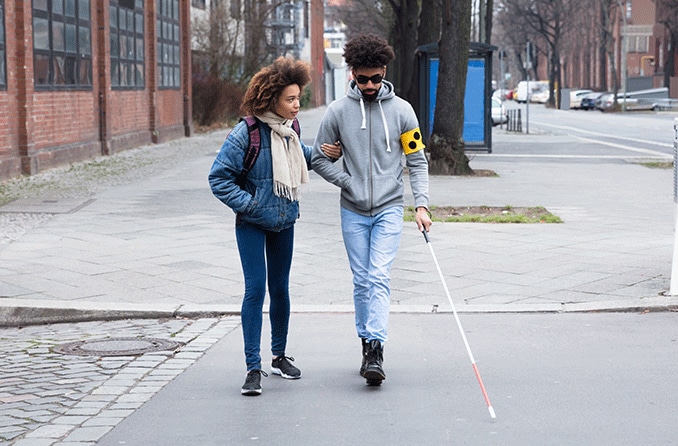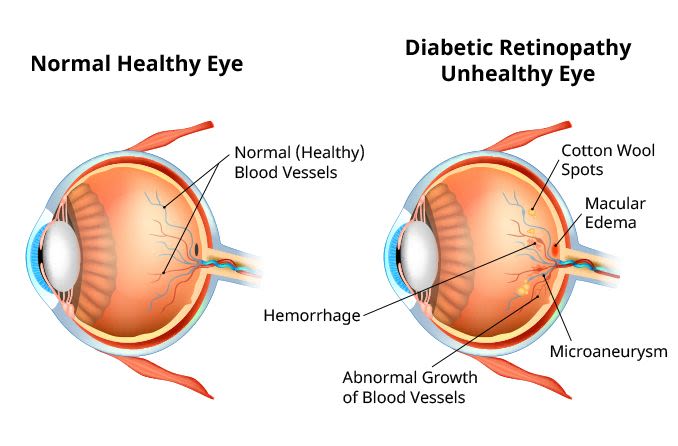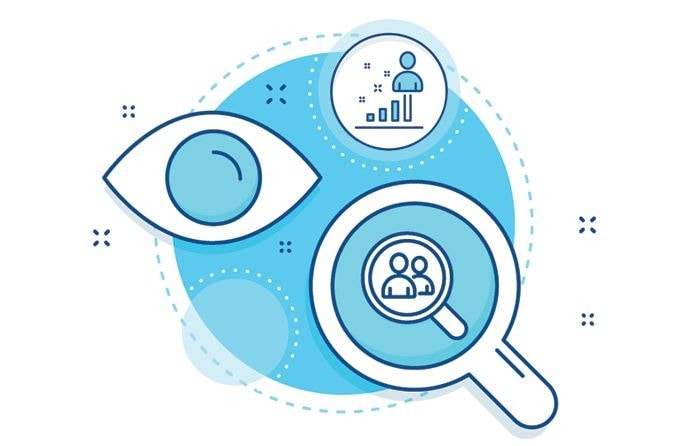What are the leading causes of blindness?
The top causes of blindness and vision impairment worldwide are age-related macular degeneration, cataracts, diabetic retinopathy, glaucoma and uncorrected refractive errors. Depending on the cause, vision loss may be prevented or treated. Regular eye exams are key for keeping your vision sharp.
In the United States, more than 4 million adults over age 40 are either legally blind or have low vision, and around 1 million of those are completely blind.
Age-related macular degeneration
Age-related macular degeneration (AMD)is a degenerative condition that damages the macula, which is a part of the retina. It typically happens in people aged 50 and older, and it affects the central vision.
There are two types of age-related macular degeneration. The more common and less serious type is dry AMD, in which the macula breaks down slowly over time, forming clumps of protein that affect vision. Dry AMD is much more common — making up around eight in 10 cases — and less devastating to vision.
The less common and more serious type is wet AMD, in which new blood vessels grow under the retina, leak blood and cause scarring on the macula. Wet AMD is responsible for 90% of the legal blindness caused by macular degeneration.
Macular degeneration causes central vision loss, where only the objects in your peripheral vision are clear. Legal blindness can occur when vision loss from AMD affects a large enough part of your field of vision.
About 11 million Americans have macular degeneration, and that number is expected to double by 2050. The risk gets higher with age, reaching 30% for those 75 and older.
Cataracts
Cataracts are a clouding of the clear natural lens of the eye that happens as you get older. Cataracts typically develop over time after age 40. Cataracts may lead to blurry vision, light sensitivity (photophobia) and/or double vision (diplopia).
A cataract can cause the lens of the eye to become so cloudy that it's difficult for light to pass through. In such severe cases, cataracts can cause blindness. Fortunately, cataract surgery can restore sight by replacing the natural lens with a clear artificial lens.
Over 24 million Americans over 40 have cataracts, including about half of Americans age 75 or older. Worldwide, cataracts are the top cause of blindness in people 50 and older.
Diabetic retinopathy
Diabetic retinopathy (DR)is a condition that can develop in the eyes as a result of uncontrolled diabetes. The condition can cause blood vessels in the retina to bleed, which can cause dark spots or areas of lost vision in your field of sight. DR can also lead to retinal scarring.
In later stages, untreated diabetic retinopathy can lead to other conditions that can cause vision loss or blindness. For example, diabetic retinopathy is a common cause of macular edema, which is swelling in the macula (the part of the retina responsible for sharp vision). If not treated, this swelling can cause permanent vision loss.
Diabetic retinopathy can also cause neovascular glaucoma, in which abnormal growth of new blood vessels causes a buildup of pressure in the eye. Diabetic retinopathy also can lead to retinal detachment, in which the retina tears away from the back of the eye. Both of these conditions can result in permanent blindness.
More than 29 million Americans have diabetes, including almost one-third who have not been diagnosed. And over 7 million Americans 40 or older have diabetic retinopathy. Diabetic retinopathy is the fifth-most-common cause of blindness in the world.
Glaucoma
Glaucoma is a group of eye conditions that can cause blindness by damaging the optic nerve. By carrying information between the eye and the brain, the optic nerve plays a key role in vision.
In many cases, glaucoma increases the pressure in the eyes. However, it can sometimes be controlled with medication that lowers eye pressure. Glaucoma may not cause any noticeable symptoms in its early stages, so regular eye exams are key for early detection. In many cases, vision loss may be the first outward sign of the condition.
The most common type of glaucoma is primary open-angle glaucoma, a progressive eye condition that can lead to vision loss, usually due to increased pressure in the eye.
Glaucoma affects more than 2.7 million Americans aged 40 and older. It is the second-leading cause of blindness for people 50 and older around the world.
Uncorrected refractive error
A refractive error is a problem that affects the way light passes through the eye. The most common refractive errors are nearsightedness (myopia), farsightedness (hyperopia) and astigmatism. Refractive errors may be corrected with glasses, contact lenses or laser eye surgery.
Uncorrected (or undercorrected)refractive error is the third-leading cause of blindness in people aged 50 and older around the world. Refractive error can cause blindness when it affects vision so severely that a patient meets the definition of legal blindness, or when a person doesn't have access to vision care to correct their refractive error.
Because refractive error is so common and easy to correct, resulting blindness and vision impairment are typically considered preventable. Unfortunately, some regions in the world do not have easy or affordable access to eye care, causing more than 150 million people globally to have vision impairment due to uncorrected refractive error.
READ NEXT: Eye health statistics
See your eye doctor
You may have no signs or symptoms of a condition until vision loss has become noticeable. In some cases, it may be too late to reverse any vision loss that has already occurred. That's why one of the keys to preventing blindness is getting regular eye exams.
Your eye doctor may notice problems developing before vision loss begins. In some cases, early treatment may save your vision or prevent further vision loss.
READ NEXT: Do blind people dream?










